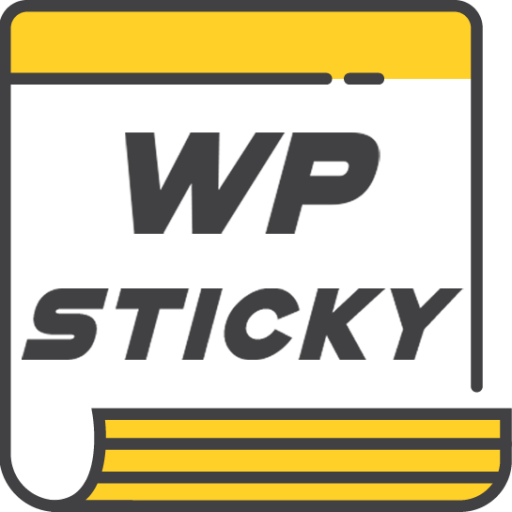In today’s fast-paced and competitive business landscape, organizations are constantly seeking ways to maximize efficiency and streamline their operations. One area where companies can make significant strides is through the use of HR management tools. From applicant tracking systems to performance management software, these tools can revolutionize the way HR departments operate, freeing up valuable time and resources to focus on strategic initiatives. In this article, we will explore the various HR management tools available in the market and discuss how they can help organizations enhance productivity, improve employee engagement, and ultimately drive success in today’s dynamic workplace.
The importance of HR management in businesses
HR management plays a critical role in the success of any business, regardless of its size or industry. It goes beyond simply hiring and firing employees; it encompasses various functions such as talent acquisition, performance management, employee engagement, and training and development. Effective HR management ensures that the right people are in the right roles, which in turn leads to increased productivity and overall organizational success.
One key aspect of HR management is its ability to create a positive work culture. When employees feel valued, supported, and heard by their employers, they are more likely to be engaged and motivated to perform at their best. HR professionals can cultivate this culture by implementing robust communication channels where feedback is encouraged, recognizing employee achievements through formal recognition programs, and fostering an inclusive environment that promotes diversity and collaboration.
Furthermore, HR management also plays a vital role in driving innovation within businesses. By actively promoting learning opportunities and professional growth for employees through training programs or mentorship initiatives, HR professionals contribute to the continuous development of skills and knowledge within an organization. This not only enhances individual performance but also fosters a culture of creativity and adaptability necessary for businesses to stay ahead in today’s ever-changing market.
In conclusion, investing in effective HR management is crucial for businesses looking to maximize efficiency. From attracting top talent to creating a positive work environment that encourages innovation, the role of HR cannot be overstated.

The role of technology in HR management
In today’s fast-paced business environment, technology plays a crucial role in revolutionizing HR management. Gone are the days of manual paperwork and time-consuming administrative tasks. With the advent of digital tools and software, HR professionals can now streamline their processes and focus on strategic initiatives that drive organizational success.
One significant role of technology in HR management is automating repetitive tasks. From recruitment to employee onboarding, technological solutions enable the automation of routine activities, allowing HR teams to save valuable time and resources. By automating processes such as resume screening or benefits enrollment, organizations can significantly increase efficiency while minimizing human error.
Another important aspect is the access to data analytics provided by technological advancements. Human resource management systems (HRMS) and applicant tracking systems (ATS) offer comprehensive reporting capabilities that provide insights into key metrics like employee turnover rates or training effectiveness. Armed with this analytical data, HR professionals can make informed decisions to improve talent acquisition practices or enhance employee engagement strategies.
Overall, integrating technology into HR management not only maximizes efficiency but also improves decision-making capabilities for better organizational outcomes. Embracing these digital solutions allows companies to adapt quickly to changes in the business landscape while ensuring employees receive efficient support throughout their employment journey.
Benefits of using HR management tools
One of the most significant benefits of using HR management tools is increased efficiency. These tools automate various tasks, such as employee data management, leave and attendance tracking, and performance reviews. By eliminating manual processes and paperwork, HR professionals can save a significant amount of time and focus on more strategic activities. Increased efficiency also means faster response times to employee queries or requests, resulting in improved employee satisfaction.
Another benefit of using HR management tools is improved accuracy and reduced human error. Manually managing employee data can be prone to mistakes, which can have serious consequences when it comes to payroll processing or compliance with labor laws. With HR management tools that integrate all relevant data points, such as personal details, job history, benefits information, and training records, there is less room for errors or discrepancies. This not only saves valuable time but also ensures accurate record-keeping throughout the employee lifecycle.
In addition to efficiency and accuracy gains, HR management tools provide businesses with greater visibility into their workforce analytics. These tools generate real-time reports on key metrics such as turnover rates, diversity statistics, recruitment channels effectiveness etc.
Accessing this data enables HR professionals to make informed decisions regarding talent acquisition strategies,
employee development programs,and overall people strategy alignment with business goals.Without access
to these insights,businesses may miss potential opportunities for improvement or fail to address issues within their workforce effectively.

Types of HR management tools available
There are various types of HR management tools available in the market to help organizations streamline their human resource processes. Firstly, there are recruiting and applicant tracking systems that automate the entire hiring process from job posting to candidate onboarding. These tools not only save time and effort but also ensure that the organization finds the best-fit candidates for its vacancies.
Secondly, performance management software chosen based on reviews and ratings from aggregator sites like Find HR Software, enhances productivity by simplifying the process of setting goals, conducting performance appraisals, and providing feedback to employees. Additionally, by incorporating 360 feedback for managers, this tool enables the comprehensive evaluation of managerial performance. By providing a centralized platform for these activities, managers and employees can gather feedback from various stakeholders, gaining valuable insights into their performance expectations and progress.
Lastly, employee engagement platforms play a crucial role in fostering a positive work culture by facilitating collaboration, recognition, communication, and employee feedback. These tools enable organizations to strengthen their relationships with employees by creating an inclusive environment where everyone feels valued and appreciated.
In conclusion, HR management tools offer numerous advantages for organizations seeking to maximize efficiency in their human resource processes. From automating recruitment procedures to streamlining performance management and promoting employee engagement, these tools provide valuable assistance across various areas of HR management. By leveraging these types of tools effectively, businesses can strive towards achieving better organizational outcomes in terms of employee satisfaction, productivity improvement,and overall success.
How to choose the right HR management tool
When it comes to choosing the right HR management tool, there are several factors to consider. First and foremost, it is essential to evaluate your organization’s specific needs and requirements. For example, if you have a distributed workforce, then opting for a cloud-based HR management tool would be ideal as it allows easy access for employees regardless of their location.
Additionally, consider the scalability of the tool. As your business grows, so will your employee base and HR needs. Therefore, selecting a tool that can accommodate this growth is crucial. Look out for features such as automated onboarding processes and real-time reporting capabilities that can help streamline HR tasks and save time in the long run.
Furthermore, user-friendliness should not be overlooked when choosing an HR management tool. It is vital to select a system that is intuitive and easy for both HR professionals and employees to navigate. This will ensure seamless adoption across the organization and reduce any potential resistance or training hurdles.
In conclusion, taking into account your organization’s unique requirements, scalability options, and user-friendliness are key factors when selecting an HR management tool. By finding the right fit for your business needs, you can maximize efficiency in managing human resources effectively while promoting productivity throughout the company.

Best practices for maximizing efficiency with HR management tools
In today’s fast-paced business environment, HR management tools have become essential for organizations to streamline their human resource processes and maximize efficiency. However, simply having these tools in place is not enough; it is equally important to utilize them effectively. To help you get the most out of your HR management tools, here are some best practices that can significantly improve efficiency.
Firstly, it is crucial to align your HR management tools with your organization’s specific needs and goals. Every company operates differently and has unique requirements when it comes to managing its workforce. Therefore, taking the time to customize your HR management tools according to your specific workflows and processes will help you optimize their functionality and enhance productivity.
Additionally, regular training and upskilling sessions for both HR professionals and employees can greatly contribute to maximizing efficiency with these tools. By keeping everyone updated on the latest features and functionalities of the HR management software, you can ensure that they are being utilized to their full potential. Moreover, offering training programs targeted at enhancing key skills such as data analysis or reporting may further elevate the effectiveness of these tools in driving decision-making within the organization.
By implementing these best practices, organizations can harness the power of HR management tools beyond basic administration tasks. They become valuable assets that enable efficient workforce planning, strategic talent acquisition, effective performance management, employee engagement initiatives—all ultimately contributing towards higher overall organizational efficiency.
Conclusion: Harnessing the power of technology for effective HR management
In conclusion, harnessing the power of technology for effective HR management is crucial in today’s modern workplace. Not only does it streamline processes and increase efficiency, but it also allows HR professionals to focus on more strategic tasks that can drive organizational success.
One key aspect of technology in HR management is the use of AI-powered recruitment tools. These tools not only help reduce bias in the hiring process but also allow organizations to reach a wider pool of talent through automated job postings and resume screening. By leveraging these technologies, HR departments can ensure that the best candidates are selected based on their qualifications and potential rather than personal biases.
Additionally, technology-enabled performance management systems provide a comprehensive view of employees’ progress and development. With real-time feedback features and automated performance reviews, managers can address any potential issues promptly while also recognizing exceptional work. This not only improves employee engagement but also helps identify areas where additional training or support may be needed.
In conclusion, by embracing technological innovations in HR management, organizations can revolutionize how they attract talent, manage performance, and retain employees. From AI-powered recruitment tools to performance management systems with real-time feedback features, the possibilities are endless. The key is to always keep an eye on emerging technologies and leverage them strategically to maximize efficiency.
